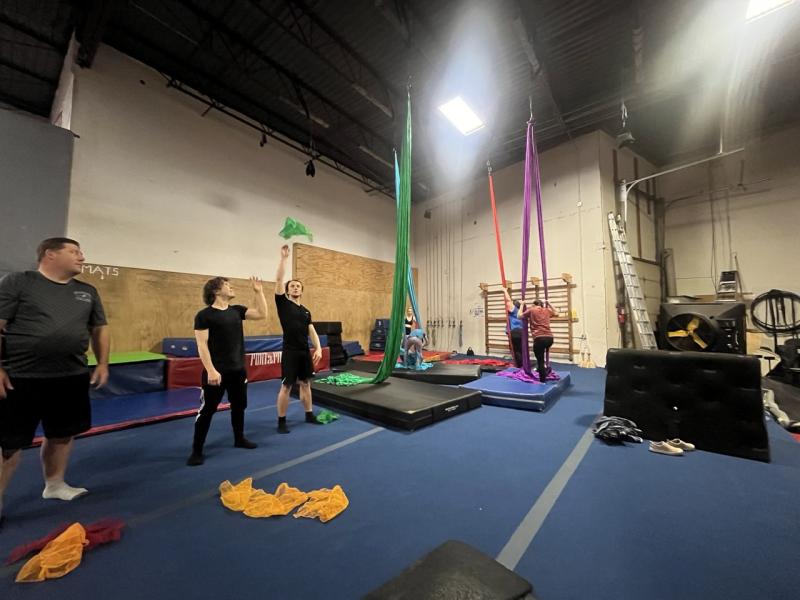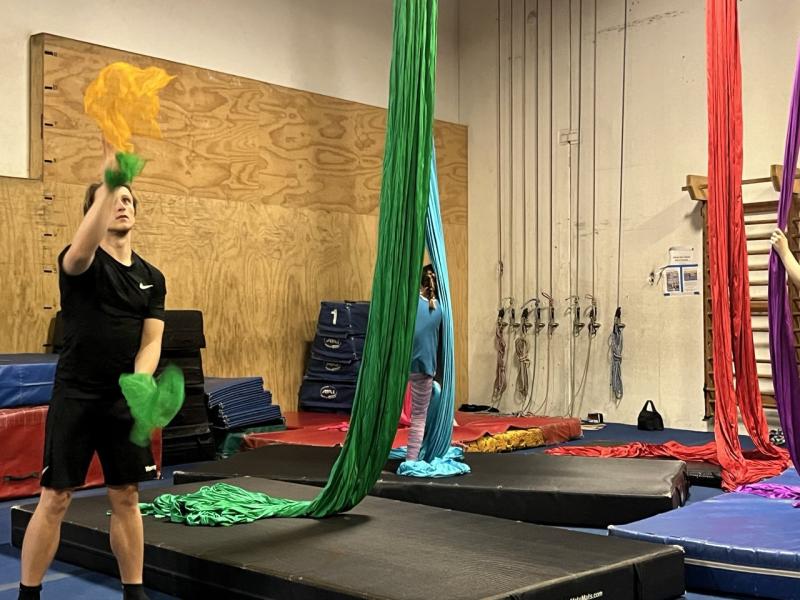Harmony in motion; How Circus Fosters Peace and Personal Growth
Lilith Diringer, International Studies

"I would definitely do it again" these are the words of Carolyn, one of the participants in the project Harmony in motion. Together with the others in today's group she had the chance to get to know several circus disciplines in a short amount of time. Starting with a warmup of the body and the mind which already included group activities, she then learned some elements at the silks, threw patterns with juggling balls, and in the partner-acrobatics session even carried her friend on her legs. All were welcome to participate in the workshop.
"In circus we do not gatekeep", as formulated by Kimberly, one of the circus coaches, is definitely one of the principles in this discipline.
Being sport and art at the same time, circus holds many characteristics which make it particularly appealing for development and peace projects. That was also the way I got started with the project. Attending a course about Sports for Development and Peace by Prof. Timothy Sisk at the Josef Korbel School of International Studies, I learned a lot about the benefits of sport projects as well as the negative sides of the whole industry. Being frustrated by the minimal amount of monitoring and evaluation I decided to spend more time researching in that field.
There is much more to do, and the project could only be the start for a whole new approach understanding the effects of circus sports. However, some potential of psychosocial benefits deriving from Performing Arts projects such as Harmony in motion could be identified:
Performing arts can be a good entry point for mental health support avoiding stigmatization of classic programs
Performing arts can be used to reduce Anxiety Illnesses, especially reducing fear of social participation
Performing arts can be used to support PTSD treatment as a form of cognitive behavioral therapy if being supported by professional therapists
Performing arts enhances respectful and peaceful treatment, reducing violent behavior
Performing arts contributes to self-reinforcing physical and mental well-being
Performing arts projects are adaptable and inclusive
Ripple Effects on long-term society well-being including increased civic engagement and social tolerance are likely
If you want to learn more about the potential of circus art fostering peace and development on a global scale, continue reading this article.
To summarize, I highly enjoyed combining my academic research and community impact within this ACE Grant. It was a wonderful opportunity to directly see how applied science can create community benefits and how observations in practical settings inform and improve the research process.


